Interview
Interview: Maria Elisa Quiaro
In conversation with Germany-based collage artist Maria Elisa Quiaro, originally from Venezuela.
Where did you study or are you self-taught?
I got a master’s degree in arts in the UK; before that, I first graduated in graphic design in Venezuela, and later on got a degree in social studies and journalism.
In Germany I became a full-time teacher of history and theory of art.
Although collage is my favourite form of art expression, I also work with encaustics and ceramics.
Can you talk about your journey into or interest in the arts?
For as long as I can remember, I have been surrounded by artists and creators. One of the first influences on me was my mother, who was a painter. My father, on the other hand, represented for me the magic of words and poetry.
My personal art journey began very early. As a child I used to cut up magazines and rebuild figures. They were never glued to a paper surface. I kept the remade characters to play with.
Years later, I studied graphic design and later art at the University of Wales. After many years working in photography, sculpture, painting and assemblage, I reconnected with collage, when I made an alphabet sketchbook with collage illustrations for my daughter.
In 2015, at a time when I had no art studio, collage was the only form of art that responded to my need of expression. Since that moment I have not stopped!
Do you use a sketchbook? I’m interested in what a sketchbook means to you and your work, or how people develop their ideas.
I do use sketchbooks to develop my ideas and to write. The choice of the sketchbook as a container format allows me to display a series of registers that are difficult to amalgamate; registers that are somewhat unstructured, which I group together to establish narrative lines.
Due to its own materiality, a sketchbook invites me to think of a clean, blank space that needs to be filled. It requires to be intervened, written, drawn. It is the space of the hand, the image and the line. I enjoy this kind of intimacy, of ‘body contact’, that makes the sketchbook become a record close to the private space, a place of intimacy, experimentation and creativity.
I use my sketchbooks in two ways. When I deal with only one concept or idea, I collage onto it. After the series is ready, it becomes an artist’s book.
Otherwise it is just a large dislocated, alternate and random album that I define as a memory space marked by the creation of the record of thoughts, a compilation of ideas and impressions.
Currently I am working on two different collage series, made directly in sketchbooks; I will let me surprise myself!
Can you talk about the influences upon your work?
On one side, I am a child of pop culture and the postmodern era; I love images. The inspiration for my work comes from films, media and modern life, as well as literature and music.
My influences are very varied. I also love art history and auteur cinema. I am a regular museum visitor. Poetry is for me the greatest inspiration.
On the other side, the development of 20th-century art – modernism – impacts me in many ways. It was a time when artists around the world used new imagery, materials and techniques to create artworks that they felt better reflected the realities and hopes of modern societies – in Germany, for example, the New Objectivity and the Bauhaus. All of that has a lot to do with collage. And of course, I have an almost infinite list of creative people that inspire me all over the arts.
You describe yourself as an artist and graphic designer. How do those two disciplines sit together?
Nowadays, I describe myself as an artist. What is invaluable to me in graphic design is the tools that it offers and which undoubtedly influence and define much of my artistic language.
A designer is not an artist. And vice versa: an artist is not a designer. Design and art have completely different principles in terms of development and purpose. Sure, spontaneity, inspiration and the desire to express something are not exclusive to the artist. The designer, too, can experience them; they are typical aspects of a creative being, regardless of the way in which they project their creativity. That is the only connection between both profiles: creativity.
All this is to say that a designer who wants to make art must deconstruct himself, to get free from the shackles of his training as a designer, connecting with his inner self and not thinking about how people will perceive the work.
As an artist I am not in debt to anything or anyone except myself. I create by mere vocation and, I would even say, out of spiritual necessity. One contemplates the world from a peculiar perspective, moulding reality and forming a personal idea that is finally embodied in an art piece.
Can you talk about your process of working. How do you work, how often, and is there a particular pattern?
Normally, I begin with a word, an idea or a concept that I want to develop in collage form. It takes time for me to search for the right image. After finding it, I enjoy composing the elements until they come to life and tell a story.
I am a very slow maker; it takes ages to find the right composition. For me that is the most important aspect of making a collage. To collage is to develop a story with only a few elements. A good collage is almost an act of magic.
I work in series to create unified, cohesive, coherent, related bodies of work. I create multiple works of art around an idea, a concept or a theme. Every series is different. There is no common thread between series.
The idea of working in series or in distinct, purposeful directions can actually be the opposite of condemning myself to a life of sameness or repetition. The process is not about repetition at all, but rather about being able to explore, investigate, examine or address particular ideas, themes, issues, compositions, concepts or topics in progressively deeper and more meaningful ways, and from a greater variety of perspectives. The closer I look, the more I see, and the more I see, the more fascinating my explorations get.
The knowledge and experience I gain from working within a well-defined set of parameters, while expressing myself from a range of different perspectives, allow me to nuance my compositions more subtly, purposefully and in greater depth and detail, and to communicate the results of my explorations in more compelling and consequential ways.
Do you find the process of creating work relaxing or therapeutic? I’ve become increasingly interested in the relationship of the sketchbook and the work to the artist.
For me the creative process is like a bug that does not leave me alone until the work comes out. The process of creating a piece of work is ‘positive stress’. It is search and encounter, trial and error. As I only make analogue collage with original paper I can get very anxious about finding the right image I have in mind.
The sketchbook allows me the freedom to enter and exit my series and put them into dialogue with completely different ones. It also allows me to review various thoughts and ideas. In that sense, it works as a dislocated, alternative file. In short, it is the random file of intentions and expressions.
Ultimately, a sketchbook invites us always to try to understand how we deal with memory and time.

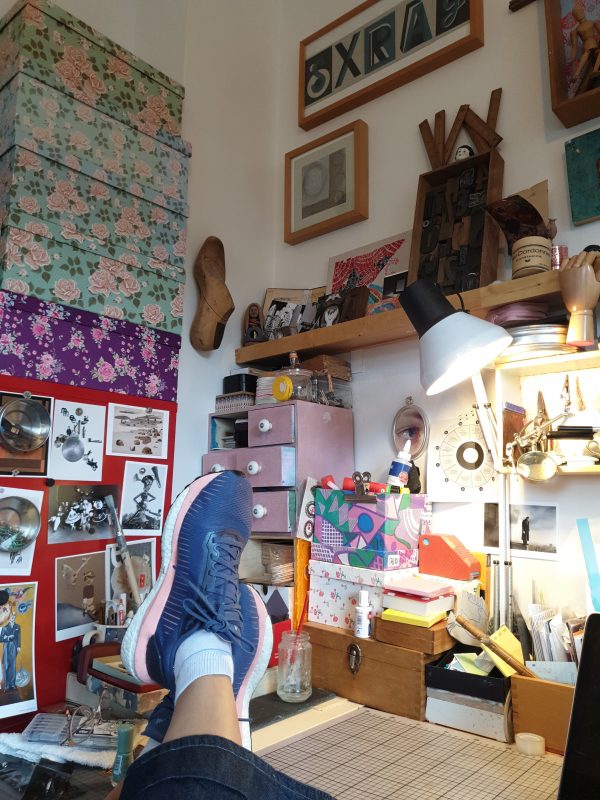
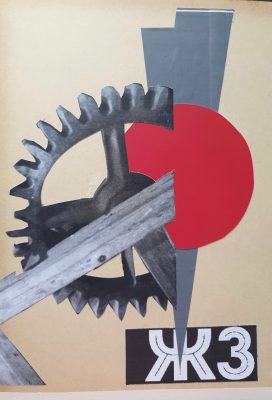
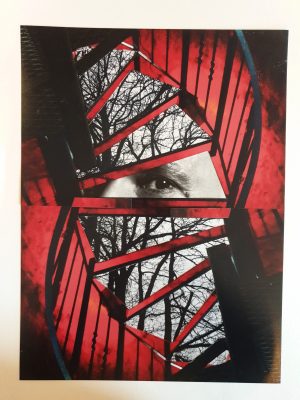
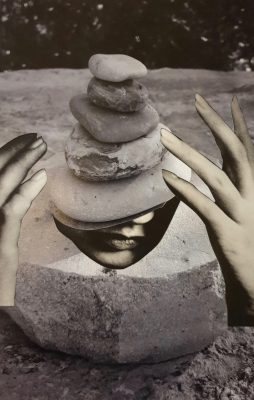
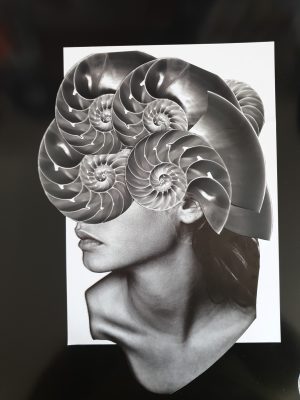
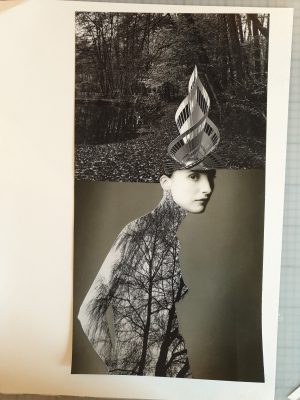
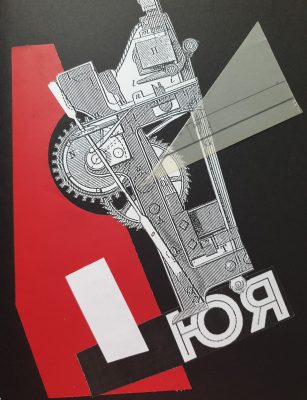
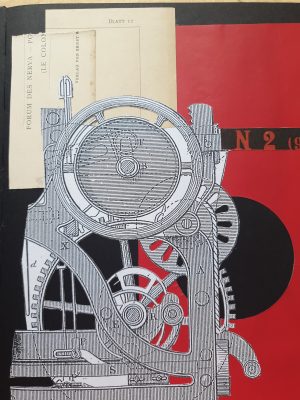
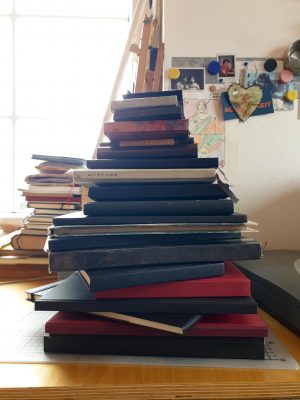
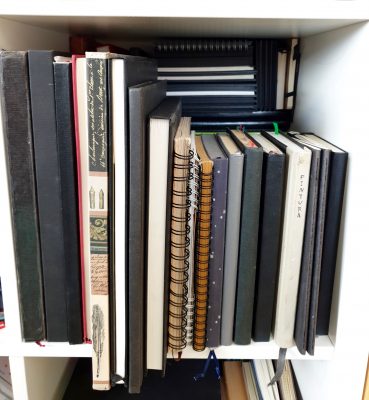
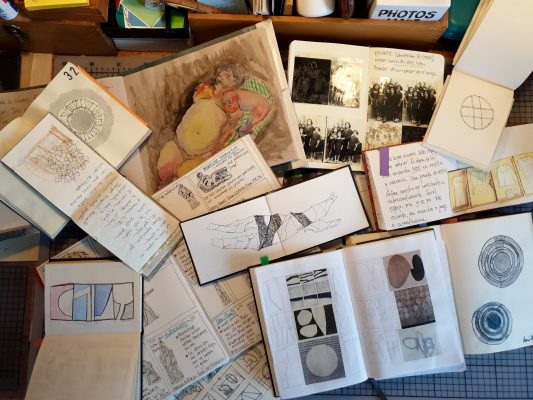
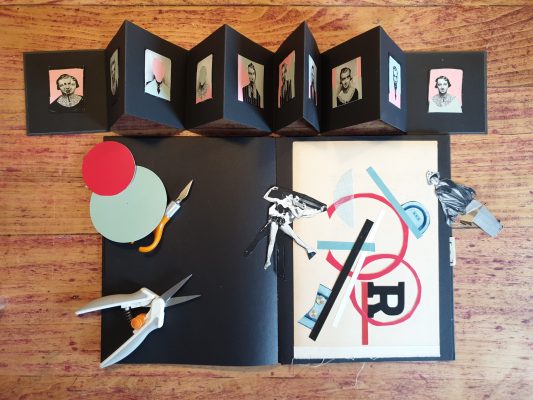
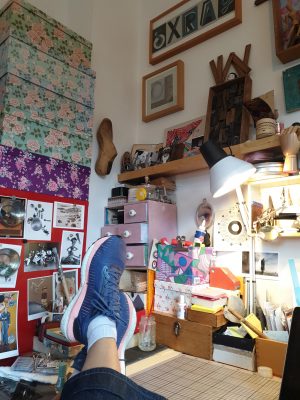
Do you like this artist?
If so, why not write a comment or share it to your social media. Thanks in advance if you can help in this way.